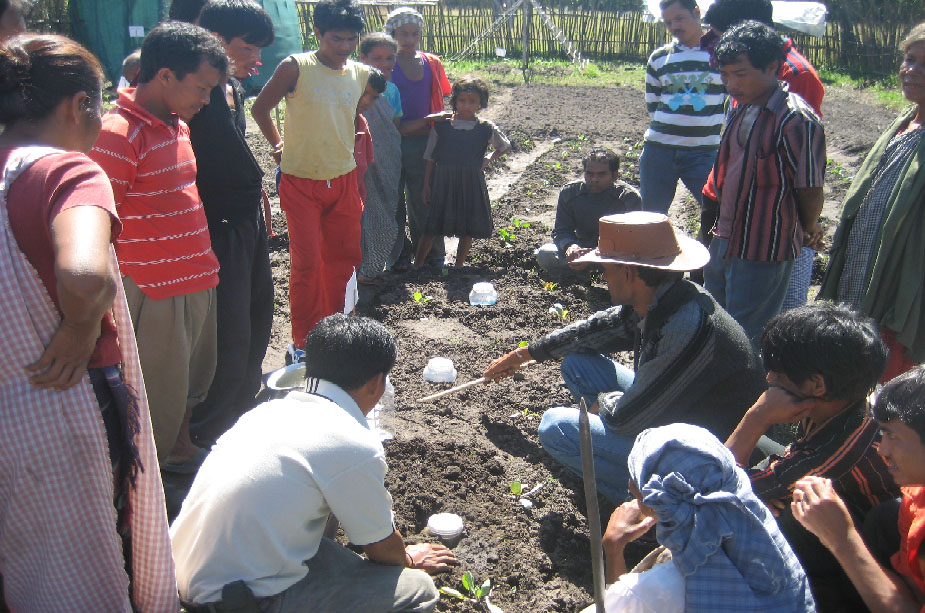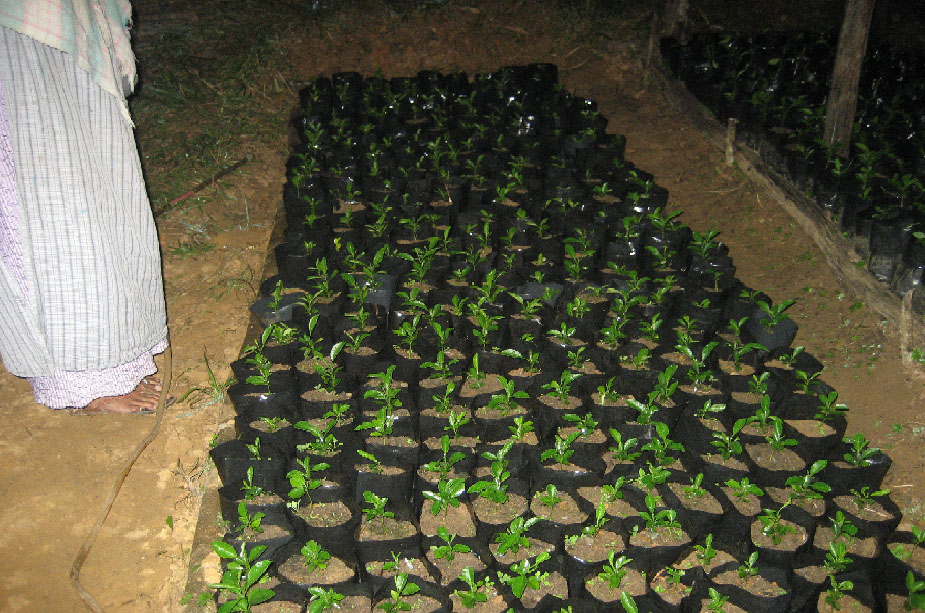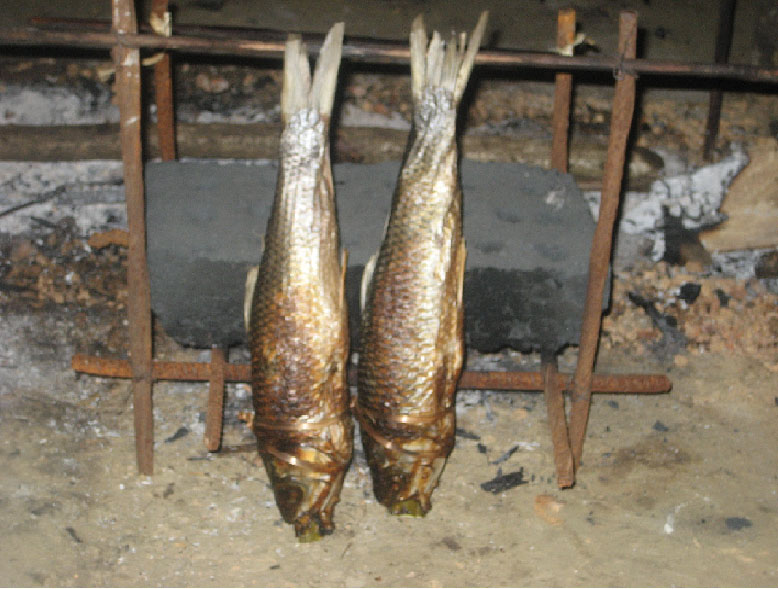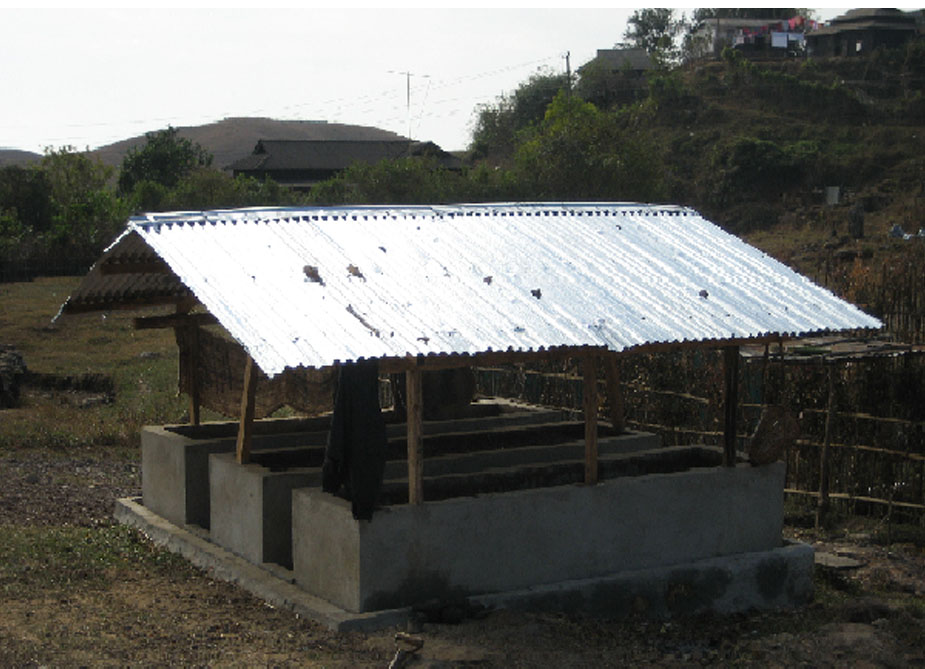DST
Status Reports with regards to the DST Project “Capacity Enhancement in simple, low-cost appropriate technologies for sustainable agriculture development among tribal youths in Amlarem Block, Jaintia Hills District of Meghalaya” for the period from 1st Arpil 2008 to 31st March 2009
A. SUMMARY SHEET
TITLE OF THE PROJECT: “Institutionalizing technology backstopping and capacity enhancement for sustainable agricultural development and encouraging entrepreneurship development based on simple rural technologies within the tribal areas of Amlarem Block, Jaintia Hills District, Meghalaya”.
-
DATE OF START: 30th Dec.2006.
- STAFF SANCTIONED & IN POSITION: 2 Staff (Principal Investigator/ Co-Principal Investigator and Field Assistant).
- ASSETS DEVELOPED OR EQUIPMENTS ACQUIRED, IF ANY During the year : NIL
- SUMMARY OF PROGESS AGAINST APPROVED WORK- PLAN/TIME SCHEDULE OF ACTIVITIES IN THE PROJECT: During the first year of the Project, the progress of the work is slow. The selected Technologies have been introduced except the Plant Propagation Techniques and Pest Control Management, the same will introducing and implemented simultaneously by the Association within this financial year.
- ISSUES NEEDING ATTENTION OF GOVERNMENT/ LOCAL BODIES: Convergence with related Line Departments.
B. DETAILED REPORT
(For the Period from1st April 2008 to 31st March 2009)
1. INTRODUCTION (NEED ASSESSMENT FOR S&T INTERVENTION IN PROJECT AREA): The Project Entitled Capacity Enhancement in Simple, Low-Cost Appropriate technologies for Sustainable Agricultural Development among Tribal Youths in Amlarem Block, Jaintia Hills District of Meghalaya, supported by the Department of Science and Technology, Govt. of India, New-Delhi in associated with the G.B.Pant Institute of Himalayan Environment and Development, Itanagar and implemented by NAM-RHEN ASSOCIATION .The Project was introduced in the community during the year 2006 and initiated for implementing on 30th December 2006.
Background of the Project Villages
Since the time of their ancestors the people of these areas have been depending on various Local resources to meet their day to day needs. But with the passage of time and with the increase in population the need for local resources has increased and the mother nature do not have enough raw materials as the process of Regeneration is a very slow process and takes thousand of years to recover the raw materials which are utilized by human beings. The rapid degradation of Natural Resources creates an Ecological Imbalance.
There are a lot of chemicals which can increase the food demand of the people, but their excessive use can cause various effects to the Soil, Water as well as Human Health. The Soil Erosion and Degradation caused by excessive use of Fertilizers and pesticides, and resulting in destruction of Agricultural Activity in the long run are not mentioned.
The people in the villages practice Shifting Cultivation, which reduces the fertility of the Soil. These years the Shifting Cultivation cycle has also decreased due to increase in population which affects productivity thus affecting the Overall economy of the Rural people. The present trend of Shifting Cultivation needs a Boost in order to enhance the Crop Production.
The use of Indigenous technologies should be blended with Scientific Components so as to make the land more productive. But this should not have effect and these modified Technologies do not interfere with the Tradition and Culture of the Indigenous Communities.
Fuel wood is also one of the main activities which have cause depletion of the Forest Resources in the villages. As fuel wood is the most dominant and most regular source of energy for the village communities. It is also posing a major Health concern due to excessive smoke Emission. Some Alternative sources of Fuel energy that is low cost, easily available, environment friendly and compensates the loss of forest to some extend.
2. APPROVED OBJECTIVE OF THE PROJECT: The following are the main Objectives of the Project:
I) To showcase simple, low-cost appropriate technologies for sustainable agriculture development in Amlarem Block Jaintia Hills District, Meghlaya.
II) Identify location specific technologies input needs in remote, marginalized shifting cultivation areas.
III) To establish a centralizing demonstration and dissemination center.
IV) Facilitate on-farm demonstration ( one on-farm demonstrations per cluster)
V) To built up the capacity of farmers & villagers through on-farm demonstration using lead farmers.
VI) Capacity building of villages/farmers in on-farm technologies and technology dissemination through on-farm demonstration and trainings.
VII) To prepare technologies dissemination materials/audio-visual/manuals and ensure wide dissemination in local languages
VIII) To encourage entrepreneurship among the tribal youth base on the rural technologies.
3. PROJECT AREA (BLOCK, VILLAGE, TOTAL AREA COVERED): Pamtbuh, Amtasam, Jaralud,Lurniang ,Amlarem and Amladkhur Village, under Amlarem Block, Jaintia Hills District, Meghalaya ( toatal villages covered so far 6 nos).
4. COMMUNITY BACKGROUND AND KNOWDELDGE LEVEL (CASTE, OCCUPATION, and INCLUDING TRADITIONAL KNOWLEDGE & PRACTICES FOLLOWED): The areas under the project situated in the precipitous slopes and deep valleys to the South of the District. Under traditional administration, the area occupies by those Project Villages is under the jurisdiction of Amwi Doloiship, whereas the Headman traditionally known as ( Rangbah Shnong) is the Head of the Village.
In the above mentioned areas nearly all the people depend on agriculture either as cultivator or gricultural labourer. The main agricultural horticultural crops grown in these areas are paddy, bananas, vegetables, oranges, betel leaves, pineapples, jackfruits, etc. of these paddy and vegetables are grown in large quantities.
The farmers in the project villages are still following the traditional method of technology for their production.
5. MOTHODOLOGY & SYSTEMS APPROACH (SURVEY/PRA EXERCISE; COMMUNITY MOBILISATION & SOCIAL ENGINEERING; TECHNOLOGY IDENTIFICATION, MODULATION & DIFFUSION & TRAINING COMPONENT, ETC.):
For gathering basic information before the start of the Project, Baseline Survey,was carried out and Resource Map and Social Map have been prepared through PRA tools. Besides that the
Community mobilization and Awareness Progress have been conducted from time to time to motivate the community about the Project.
Baseline Survey was conducted in the 5 villages and some important Information was collected from the head of the Household in the form of Household Questionnaire. From this process we could gather some important information about the village and their types of livelihood, which is very important for us too; so that we can find out the type of village we are working and the main occupation of the people residing in the village, and the difficulties they encounter in their daily activity. We can also find out the type of forest and horticulture trees found in the village.
Some of the Questions contain in the Household Questionnaire were
1. Members of the Family
2. Occupation
3. Availability of land
4. Total Production in a year
5. Availability of Livestock
6. Sources of Income
7. Expenditure in a Month
8. Types of Forest Trees and Fruit Trees which grow in their village, etc.
METHODOLOGY ADOPTED:
1. Sensitization Programme was conducted in the villages as an Introduction of the Project. There were a good number of participants from the village during the sensitization. We explain to the people about the aims and objectives of the project and the techniques that can be used to improve their livelihood, which is low cost and easy to understand and practice in the field. The raw material is easily available from local resources. A brief introduction about all the technologies was explained to them.
2. Selection of lead farmers was done in presence of the entire village Community where selection is done by the participatory approach and identification of the community.
3. Collection of Household Information is done with the help of Household Questionnaire. This was done in order to get better information about the people of the village, Their Livelihood Activities, and their daily hardship, which the villagers encounter.
4. Demonstration of Technologies at Pamtbuh Village and assisting trainings of the technologies to the other Project villages.
5. Selection of Demonstration Center for Pamtbuh cluster and choosing Pamtbuh Village as one of the Demonstration Center Unit.
6. Dissemination of Technologies at the Project villages as well as non project Villages.
7. Construction of Demonstration Plot at the Head Quarter Office, for providing Training to the Lead farmers of the Project villages
6. TECHNOLOGY BACK-UP SUPPORT ( NAMES OF SCIENTIESTS INVOLVED AND SUPPORT RECEIVED & LINKAGES ESTABLISHED WITH S&T INSTITUTION):
So far the programme has been supported by the G.B.Pant Institute of Himalayan Environment and Development, North East Unit, Itanagar as the coordinating agency for Technology Back-up Support. The Association also work hand in hand with Agriculture and Horticulture Department of Government of Meghalaya for all the Technical Support.

Officials from the G.B.P.Institute of Himalayan Environment and Development, NE Unit, Itanagar, during their Official visit to monitor the Project.
7. SCIENCE & TECHNOLOGY COMPONENT ( TECHNOLOGY PACKAGE DEVELOPMENT/ NEW INNOVATIONS/ OBSERVATIONS): The technologies were selected and adopted according to the Technologies introduced by the G.B.Pant Institute of Himalayan Environment and Development, North East Unit, Itanagar
8. PEOPLE’S PARTICIPATION FROM PLANNING TO IMPLEMENTION STAGE( WITH EMPHASIS ON THEIR INVOLVEMENT IN TECHNOLOGY GENERATION/ MODULATION/ TRANSFER/ADOPTION; CO-OPERATIVE FORMATIONS / SELF HELP GROUPS: GENDER PERSPECTIVE): The Project itself is being designed as the Peoples Project with an aim to involve the farmers to disseminate the Technologies for raising their incomes through using of low cost Technologies. The technologies are selected according to the preference of the villagers. Lead trainers and trainees are trained in respective technologies.
9. INDICATORS APPLIED FOR MONITORING (QUALITATIVE & QUANTITATITATIVE ANALYSIS/ STAKEHOLDER ANALYSIS): Developing of Monitoring Tools for monitoring the Project are in progress and the same to send to the DST for approval after developing the same.
10. OBJECTIVES ACHIEVED SO FAR:
I. The Association have been able to start the Demonstration Centre
II. Training and introducing the communities 10 technologies for raising their agricultural produces.
III. Replication of Technologies by the Farmers (Weed Composting, Vermicompting, etc.).

Orange Nursery Raising by using of Weed Composting Unit at Pamtbuh Village (Project Villages)
11. WORK REMAINING TO BE DONE UNDER THE PROJECT: In the Third
year and remaining years of the Project the following Technologies to be introduce to farmers:
|
|
3rd Year |
1. PEST CONTROL |
|
|
2. PLANT PROPAGATION TECHNIQUES a) GRAFTING b) BUDDING
|
|
||
|
3. BAMBOO PROPAGATION |
|
12. AGENCIES/INSTITUTIONS/DEPT.’S LIKELY TO BE INTERESTED IN THE PROBLEM, METHODOLOGY, RESULTS, ETC.: Horticulture and Agriculture Department, Government of Meghalaya.
13. CONSTRAINTS, IF ANY: Repeated changing of P.I by the Association.
INTERVENTION OF DST REQUESTED FOR: In Amladkhur village Fish drying is one of the activities engaging by the people for raising their income. Firewood is being used for drying the fish. These dry fish producers from this particular village requested us from the project to modify the bio-briquettes so as to minimize the use of firewood and also minimize the health hazards of these people especially women. In other to be able to help them, we need the Technical support from the project

Using of BIO- BRIQUETTING for IGA (Drying of Fish) by Women SHG at Amladkhur Village (on trial basis)
15. DATE WHEN THIS REPORT WAS DISCUSSED WITH PROJECT TEAM/ TARGET GROUP- AND BRIEF OUTCOME:. 8th July 2009
Technology Adoption:
|
Sl. No |
Name of Technology |
Villages |
|
i |
Weed Composting |
Pamtbuh |
|
ii |
|
Jaralood |
|
iii |
|
Amtasam |
|
iv |
|
Lurniang |
|
v |
|
Amladkhur |
|
vi |
Vermi Composting |
Amtasam |
|
|
|
Amladkhur |
|
|
|
Pamtbuh |
|
|
|
Amlarem |
|
vii |
Bio Briquetting |
Amladkhur |
Nos. of Lead Farmers selected:
|
Sl.No |
Village |
No. of Lead Farmers |
|
i |
Pamtbuh |
7 |
|
ii |
Jaralood |
5 |
|
iii |
Amtasam |
2 |
|
iv |
Lurniang |
2 |
|
v |
Amladkhur |
5 |
|
vi |
Amlarem (Amrkeng) |
2 |
Sl.No |
Place |
Name of the technologies established |
|
|
Demonstration Site(Pamtbuh Village) |
-Weed Composting-Bio- Briquetting-Vermi Composting-Poly film Technology- Green House- Trellisesa) Square Shapedb) V-Shapedc) Half- Moon shaped- Handi Technology- Bamboo Propagation |
|
|
The Demonstration centre also has been established at the Head Quarter Office of the Association at Sohkha and Amlarem Village. |
|
On-Farm Demonstration Site

Vermicompost unit at Pamtbuh Demonstration Centre